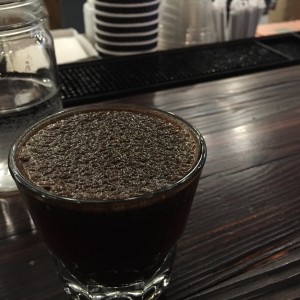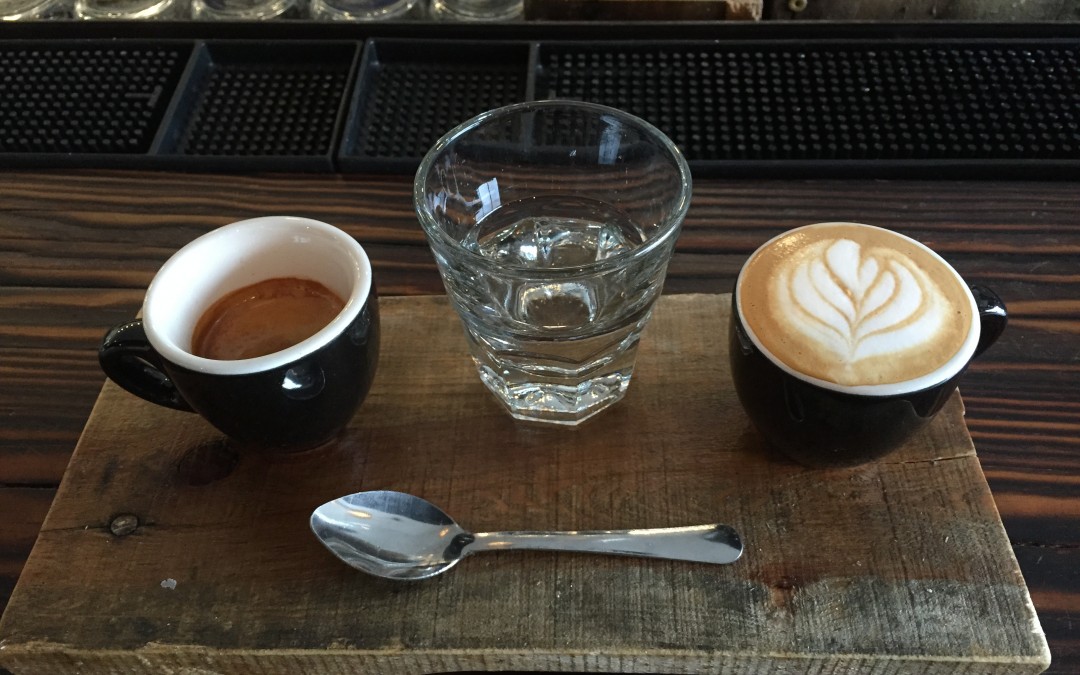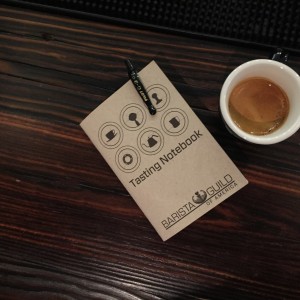Through this is a blog series, let me say that if you want to spend money on coffee, I would be pleased to help you. I’m not your guy for deals but I have a wish list a mile long.
Hand mill burr grinder, variable temperature gooseneck kettle, Turkish coffee set, and even researched small-scale espresso machines (New La Marzocco Linea Mini!). But, what caught my attention a couple years back is something called “Le Nez Du Café.”
I came across this bizarre wooden box when I worked at New World Coffee House, a specialty coffee shop in Raleigh off Glenwood. Mike Zhu, the owner there, had one and he showed it to me.
“Le Nez du Café” comes with around 40 glass vials, each containing the essence of something we may experience in our coffee’s aroma, and is accompanied by a booklet explaining where the flavors originate from.
For example, there’s aromas of straw that can indicate a type of coffee plant, a note of toast from how the bean was roasted, and even a scent of damp earth that may indicate how the bean was dried.
Essentially, it’s $300 to win every cocktail party you will ever go to. EVER. But, what if we took these smells, these essences of something so familiar, and we didn’t think of coffee but of life. When we begin to open our minds to what we experience, a world of our history, our experiences comes to life.
This is something we do already subconsciously. I love sweet and herbal notes in my coffee as it’s something that I enjoy already. I recognize it as a flavor I’m comfortable with, make the deduction that I like this in coffee as well, and sometimes create the separation between what I am enjoying and what’s in the cup.
I think there’s a benefit in being intentional when it comes to the coffee we experience.
I’m not trying to advocate for the” Le Nez du Cafe,” but not long ago we talked about how coffee is an emotional experience.
I want to take this idea and bring it to how we evaluate coffee: cuppings.

At the roastery, its a process we’re quite familiar with. You could even do it at home with your coffee. I’ll break it down into some steps:
- Grind your coffee coarsely (something like a french-press grind) and place it in a cup.
- Bring the cup to your nose and smell it. Take notes on what sticks out to you.
- Put water (195-205 degrees) in the cup and smell again as it’s brewing. See what’s different in the aroma but what is consistent as well.
- A crust of coffee should form at the top, at least if it’s fresh. Break the crust with a spoon. Take note that as its broken, a strong aroma will be released, this is your opportunity to catch it, your window per se.
- Lastly, after brewing for about 4 minutes or so, remove the grounds. Usually helps to push the grounds down or remove them. See if the aromas transferred to taste. Also, simply think about whether or not you like the coffee.
You want to evaluate the coffee to see if you can taste the aromas you smelled at the beginning. This is also a time to notice what is in the taste, but not the smell, that may indicate flaw in the roasting process (like that burnt toast we were discussing earlier).
I used to go to some of Counter Culture Coffee’s weekly cuppings. When I went, what stuck out to me was how everyone described the coffee. In particular, I remember one of the best baristas on the East Coast describing what he was tasting. It wasn’t fruit, or sweetness. He would say things such as Peach Cobbler.
What a wonderful description.
Doesn’t Peach Cobbler just take you back to something straight out of grandma’s kitchen? Funny thing, too, is that the description was dead-on. I found myself smiling ear-to-ear just thinking about it.
From then on I wanted to think about coffee from that perspective, and I think you should take a second to think about your coffee in that way as well. Not just for what it is, but what it can be.
A similar time to when Raleigh Coffee Company first had an Ethiopian coffee from Harrar. We would talk about it as a sweet blueberry juice, where you can picture the rich blue and purple colors. You could see them crushed together and sweetened, like they were brewing in a pot looking to be poured over your morning oatmeal.
Its a simple way to think of coffee, but also helps bring an intentionality to that evaluation. It uses our emotional experiences to describe the coffee. Sure it may have a nice mouth-feel. It might be bright and citrusy. It may be earthy, nutty. Yet, what takes us to these thoughts? What do these remind us of?
It makes a good coffee even better. It makes it memorable.
So that’s my challenge this friday as you spring into your weekend: evaluate your coffee and what does it remind you of? Just finished our Peru here at RCC and I’m tasting some dark chocolate covered raisins, or some other fruit. Still working on it.



Trackbacks/Pingbacks